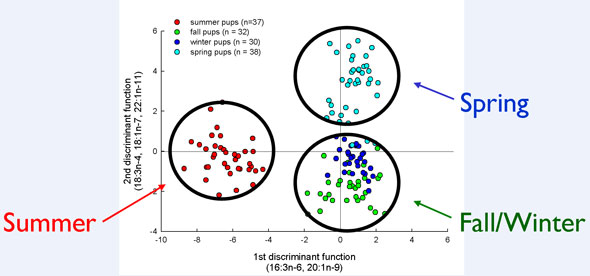Steller Sea Lion Research
Fatty Acids Analysis
We analyze the suite of fatty acids (or “fatty acid signature”) found in young sea lion ingested milk and subcutaneous blubber to determine what types of prey they are consuming once they wean and begin foraging on their own. We are able to identify differences in the fatty acid signature found in milk and in different types of prey species. When a sea lion consumes milk or prey, fatty acids found within these foods are deposited into sea lion blubber in an essentially unchanged form. Thus we can compare the fatty acid signature of sea lion blubber to the signature of milk and prey in order to identify whether sea lions are nursing, foraging or both. We are also working to identify the set prey species consumed by individual sea lions using this method.

Publications
- Beck, C.A., Rea, L.D., Iverson, S.J., Kennish, J.M., Pitcher, K.W., and Fadely, B. 2007. Blubber fatty acid profiles reveal regional, seasonal, age-class and sex differences in the diet of young Steller sea lions in Alaska. Marine Ecology Progress Series 338: 269–280.
Contact the ADF&G Steller Sea Lion Program at dfg.dwc.sealions@alaska.gov.
